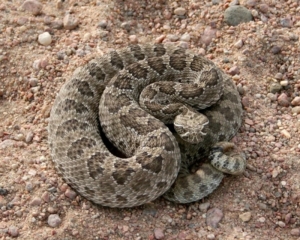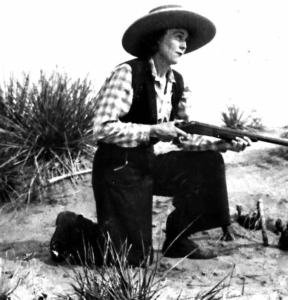DCPA NEWS CENTER
Enjoy the best stories and perspectives from the theatre world today.
Enjoy the best stories and perspectives from the theatre world today.
When you hear the word “migration,” it’s likely you think of birds migrating toward warmer temperatures. Migration is usually an animal or insect’s response to a change in temperature, food supply, or amount of daylight. There are also two important factors that differentiate migration from other types of movement or travel: first, migrations are seasonal, and second, migration involves a return journey.
For example, you can find monarch butterflies flying all the way from Canada to Mexico to avoid harsh winters. On their way home, the butterflies will make the journey over multiple generations, stopping to lay eggs on milkweed plants along the way. The caterpillars eat the milkweed and then finish the journey as butterflies.
But what about rattlesnakes? Do they migrate, and if so, how?
The answer to this question starts with an explanation of rattlesnakes’ version of hibernation. Because snakes are cold-blooded, their body temperatures aren’t self-regulated. Instead, they rely on their surroundings to provide heat, which means they can’t be active in cold weather. A rattlesnake’s metabolism slows down tremendously, allowing them to go long periods of time without food. This state of being is called brumation.
Rattlesnakes will find shelter out of the cold by burrowing in holes and caves. In some areas, you may even find them under your porch or making their way into your garage. Though not enough research has been done for all snake species, it’s been found that some rattlesnake genera are social creatures, burrowing together in large, extended family groups. For example, Timber
 rattlesnakes have been found hibernating in groups of up to 200. Nearly 10,000 garter snakes were found in a single den site in Canada, a fact that might terrify some and fascinate others.
rattlesnakes have been found hibernating in groups of up to 200. Nearly 10,000 garter snakes were found in a single den site in Canada, a fact that might terrify some and fascinate others.
In the spring, rattlesnakes will emerge from their dens to bask, hunt, and mate. As they leave, some snake species will secrete a chemical trail, enabling them to return to the same den site for the next winter. Unusual gatherings of rattlesnakes in April and mid-October are a good indication that a winter den site is nearby.
In the case of Kate Slaughterback, famously known as Rattlesnake Kate, she came across over a hundred rattlesnakes in October of 1925 while riding horseback across her homestead. It’s likely that these snakes hibernated together in years prior and were making their way toward their nearby den for the winter. In Kate’s case, they didn’t quite make it there.
If you ever stumble across the path of a hundred rattlesnakes, it’s important to remember that snakes are generally shy and timid creatures. Snakes will not make an unprovoked attack on a human who crosses their path. Their first reaction will be to find shelter, not to bite you.
Freeze if you hear a rattlesnake, even if you can’t see it yet, which can help you assess the situation and reduce your threat to the snake. Once you’ve located the snake, move slowly away to establish at least a five-foot distance. Trying to attack, kill, or catch a rattlesnake is a surefire way of provoking a defensive snakebite. Rattlesnake Kate may have been able to accomplish the impossible, but that doesn’t mean you should follow in her footsteps!
 Learn more about how Kate Slaughterback survived the snake migration at the world premiere of DCPA Theatre Company’s Rattlesnake Kate.
Learn more about how Kate Slaughterback survived the snake migration at the world premiere of DCPA Theatre Company’s Rattlesnake Kate.
DETAILS
Rattlesnake Kate
Feb 4 – Mar 13, 2022 • Wolf Theatre
